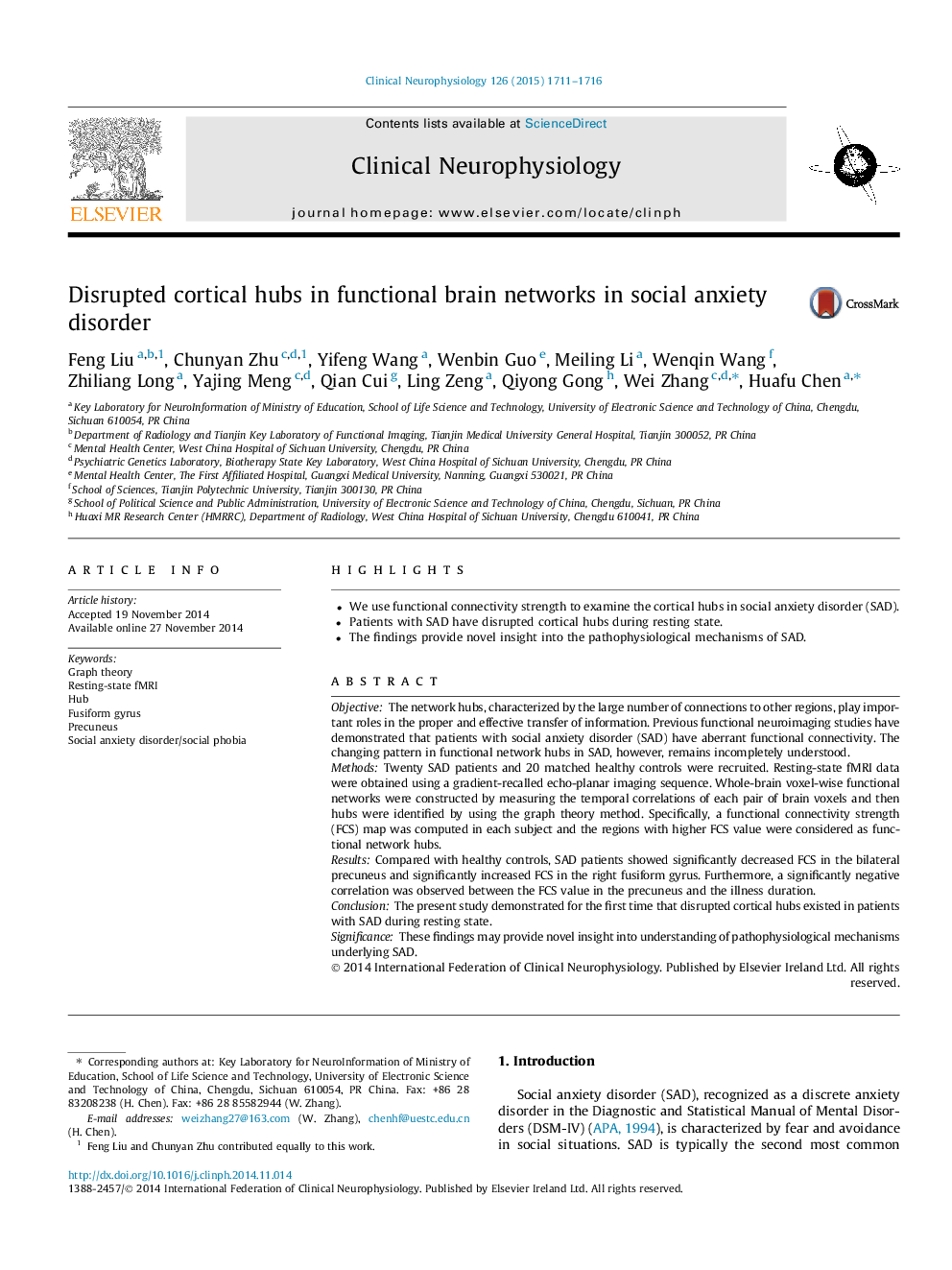| Article ID | Journal | Published Year | Pages | File Type |
|---|---|---|---|---|
| 3042819 | Clinical Neurophysiology | 2015 | 6 Pages |
•We use functional connectivity strength to examine the cortical hubs in social anxiety disorder (SAD).•Patients with SAD have disrupted cortical hubs during resting state.•The findings provide novel insight into the pathophysiological mechanisms of SAD.
ObjectiveThe network hubs, characterized by the large number of connections to other regions, play important roles in the proper and effective transfer of information. Previous functional neuroimaging studies have demonstrated that patients with social anxiety disorder (SAD) have aberrant functional connectivity. The changing pattern in functional network hubs in SAD, however, remains incompletely understood.MethodsTwenty SAD patients and 20 matched healthy controls were recruited. Resting-state fMRI data were obtained using a gradient-recalled echo-planar imaging sequence. Whole-brain voxel-wise functional networks were constructed by measuring the temporal correlations of each pair of brain voxels and then hubs were identified by using the graph theory method. Specifically, a functional connectivity strength (FCS) map was computed in each subject and the regions with higher FCS value were considered as functional network hubs.ResultsCompared with healthy controls, SAD patients showed significantly decreased FCS in the bilateral precuneus and significantly increased FCS in the right fusiform gyrus. Furthermore, a significantly negative correlation was observed between the FCS value in the precuneus and the illness duration.ConclusionThe present study demonstrated for the first time that disrupted cortical hubs existed in patients with SAD during resting state.SignificanceThese findings may provide novel insight into understanding of pathophysiological mechanisms underlying SAD.
